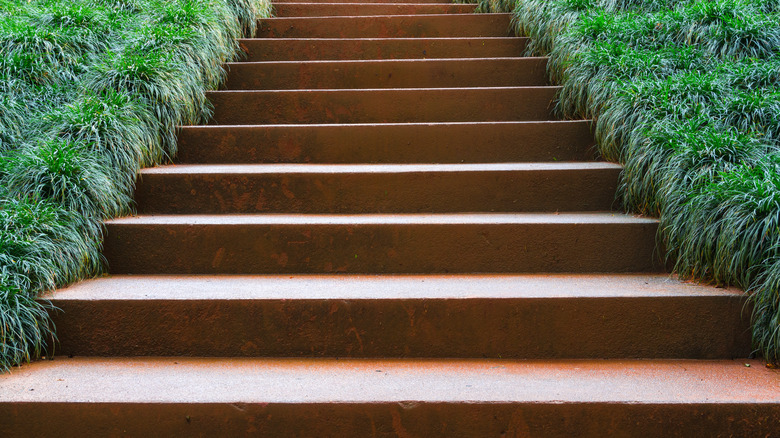Dwarf mondo grass, scientifically known as Ophiopogon japonicus, is one of three mondo grasses gaining popularity among gardeners and landscapers for its furry-like spread and low-maintenance characteristics. This miniature plant is not a true grass but a lilyturf and is native to the wooded forests of Japan, Vietnam, the Philippines, China, and Korea.
Dwarf mondo grass stands out for its evergreen foliage that introduces texture and depth into landscape designs. Its foliage is thin, gently curving downward under its weight. Typically reaching up to six inches in height, it spreads its stolons (or “runners”) about every ten inches, enabling it to densely populate spaces where traditional lawns may falter. Its growth habit is compact and remarkably adaptable, thriving across a wide range of climates, as evidenced by its hardiness in USDA Zone 6 through Zone 11. This broad adaptability means it can flourish across diverse temperature ranges and environmental conditions, making it a versatile choice for gardeners seeking a well-rounded, attractive ground cover.
Dwarf mondo also thrives under various sun exposures. You can strategically position it in your garden to achieve the desired shade of dwarf mondo grass; more sunlight tends to lighten its color. The plant also produces small, inconspicuous flowers in the summer, followed by tiny, blue-black berries, adding a subtle charm to its appearance. Whether used as a lawn substitute, between stepping stones, or as an edging plant, dwarf mondo grass can elevate the visual appeal of your outdoor space.
The benefits of dwarf mondo grass

One of the most compelling reasons to consider dwarf mondo grass is its low maintenance. Once established, it requires minimal care, making it ideal for busy homeowners or those seeking a low-effort garden. Due to its slow growth rate, it doesn’t spread quickly, reducing the need for frequent trimming or edging. It rarely needs mowing and is relatively free from pests and diseases. However, if the conditions are too moist, it can be susceptible to pests such as slugs or snails and have an increased risk of fungal diseases like root rot.
Dwarf mondo grass also has several environmental benefits. Its dense growth pattern plays a crucial role in preventing soil erosion by stabilizing the ground, rendering it an ideal selection for sloped terrains or areas susceptible to erosion. Moreover, while the plant is drought-tolerant, it does require moderate moisture during dry spells until it becomes established. After this period, its need for water significantly reduces, demanding less than the weekly amount required by a traditional lawn. Opting for dwarf mondo grass allows gardeners to cultivate a more sustainable landscape within its environment.
Additionally, dwarf mondo grass can grow in different soil types as long as the soil is well-draining, preferring sandy loam soil. This adaptability ensures it fits seamlessly into various landscape settings without requiring extensive soil modifications. Whether you aim to design a Japanese garden, a resilient walkway, or a simple, low-maintenance alternative to traditional lawns, dwarf mondo grass can fulfill your landscaping needs.
A step-by-step guide on how to cultivate your own dwarf mondo grass
Growing and establishing dwarf mondo grass is a simple and rewarding process. Begin by selecting a site that aligns with the light requirements of dwarf mondo grass, emphasizing the need for well-drained, fertile soil. Enhance the planting area with compost to boost soil structure and nutrient levels and ensure the site is free from water collection to prevent root rot. Spread the plants approximately six to eight inches apart to facilitate growth and avoid overcrowding.
Proceed by removing the grass from its container, gently loosening the roots to stimulate outward growth, and planting it about three inches deep. Fill the hole with some soil and gently pat around the base to remove any air pockets. Water the plants regularly after planting to settle the soil around the roots, keeping the soil moist but well-drained during the critical initial growth period to help establish the plant.
To conserve soil moisture, regulate temperature, and deter weed growth, apply a thin layer of organic mulch around the plants, avoiding direct contact with the stems to prevent rot. Early spring is the best time to use a balanced, slow-release fertilizer to encourage robust growth. Lastly, keep the plant area weed-free and be on the lookout for any signs of pests or diseases, particularly in the early stages of development. By incorporating this durable and versatile plant into your garden, you can create a stunning, low-maintenance landscape that thrives year after year.